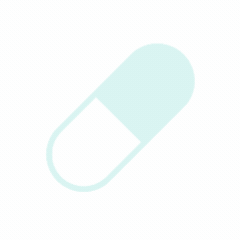Drug updated on 12/11/2024
| Dosage Form | Injection (intramuscular; 300 units, 500 units) |
| Drug Class | Acetylcholine release inhibitors and neuromuscular blocking agents |
| Ongoing and Completed Studies | ClinicalTrials.gov |
Indication
- Indicated for the treatment of cervical dystonia in adults.
- Indicated for the temporary improvement in the appearance of moderate to severe glabellar lines associated with procerus and corrugator muscle activity in adults < 65 years of age.
- Indicated for the treatment of spasticity in patients 2 years of age and older.
Latest News

Summary
- This summary is based on the review of seven systematic review(s)/meta-analysis(es). [1-7]
- The studies included adults with post-stroke spasticity (PSS) treated with abobotulinumtoxinA (aboBoNT-A) and physiotherapy, showing cost-effectiveness with a quality-adjusted life-year (QALY) gained below €40,000. They also involved children with upper limb spasticity, where aboBoNT-A demonstrated a trend towards higher response rates compared to onabotulinumtoxinA, leading to improved health-related quality of life (HRQoL). Additionally, adults with cervical dystonia showed better tolerance and fewer adverse events with aboBoNT-A compared to the anticholinergic trihexyphenidyl.
- In adults with cervical dystonia, abobotulinumtoxinA was associated with fewer adverse events compared to the anticholinergic drug trihexyphenidyl, which had more reported events such as dry mouth and memory problems. Pediatric patients treated with aboBoNT-A exhibited similar safety outcomes as other botulinum toxin therapies, with no specific adverse events highlighted. Additionally, cosmetic applications of aboBoNT-A reported no serious adverse events, indicating a favorable safety profile in aesthetic treatments.
- The evidence highlights several population types relevant to aboBoNT-A, including adults with post-stroke spasticity, adults with disabling limb spasticity, children with upper limb spasticity, adults with cervical dystonia, and patients seeking cosmetic improvements. Specifically, adults with PSS showed improved outcomes when treated with aboBoNT-A in combination with physiotherapy, while pediatric patients exhibited higher treatment response and improved health-related quality of life compared to onabotulinumtoxinA. Additionally, adults with cervical dystonia tolerated aboBoNT-A better, with fewer adverse events compared to the anticholinergic trihexyphenidyl.
Product Monograph / Prescribing Information
| Document Title | Year | Source |
|---|---|---|
| Dysport (abobotulinumtoxinA) Prescribing Information. | 2023 | Ipsen Biopharmaceuticals, Inc., Cambridge, MA |
Systematic Reviews / Meta-Analyses
Clinical Practice Guidelines
| Document Title | Year | Source |
|---|---|---|
| Oscar clinical guideline: botulinum toxin. | 2017 | OSCAR |

